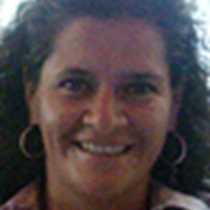Bartolomé Island
The first full day in the Galápagos, started with an early outing to Bartolomé Island, one of the smallest of the chain. This particularly small formation is considered young, around two hundred thousand years, which in geological time is considered a baby. As we walked uphill on the wooden trail that was built here to slow down erosion, we were able to see how pioneer species of vegetation have the responsibility of making the soil, so other plants can eventually be successful colonizers. The tiquilia or gray matt plant is in this case the one.
As we continued our walk up the stairs we had a chance to see the bare lava flows and the many different features that have made the island known as “geologist’s paradise.” To hike in Bartolomé is to be transported back to the beginning of time. Not a lot of wildlife, just organisms, have succeeded. A very small lava lizard is the lonely owner of the place so far with some eventual visitors like grasshoppers. The difficult conditions of the ecosystem with no fresh water are suited only for the strongest survivors; reptiles once again have proven to be it…
The water during the snorkel was perfect, as the temperature has dropped down and we could see how the marine life has returned to this site. Schools and schools of baby snappers, rainbow fish, and cardinal fish kept us busy looking around the walls that make the base of the pinnacle. Some people saw the white tip baby sharks, others saw penguins and a few where able to find a marbled sting ray that was quite big. What a beautiful first water experience we had today.
James or Santiago in the afternoon was also blooming with life. San Salvador is a third name the Island has. The names have been given to the islands by early visitors that used to come here in search of fresh water and food.
Charles Darwin who visited the Galápagos in 1835 was able to camp here for nine days. As he did it, he wrote that he couldn’t find an area free of land iguanas in which he could place his tent. Today, the land Iguanas of Santiago are gone; introduced species made them go extinct. Lindblad/National Geographic has adopted Santiago and with our help the island ecosystem is being restored and soon it will be like humans have never been here.
As we walked back to the ship, we were satisfied with the idea of us making a difference; we are proud to say that it’s our responsibility to conserve it for future generations…




